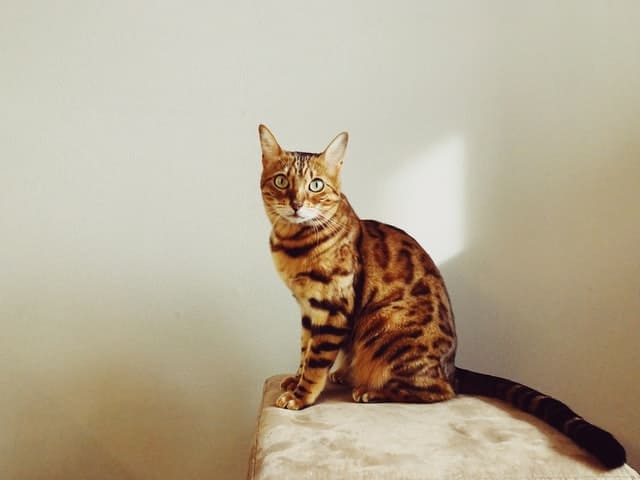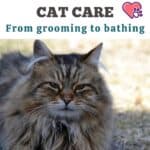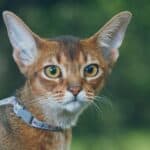Turbulent, dynamic and affectionate with the family: the Bengal cat retains the typical traits of its wild nature in its name, appearance and character. What sets it apart from all other cats? He loves water …

The Bengal Cat born from an unsuccessful experiment by Dr. Centerwall who in 1973 attempted to study feline leukemia in domestic cats, the Bengal cat is a hybrid feline breed resulting from the crossing of the domestic cat and the Asian leopard cat .
Subsequent crosses to make the ‘Bengal’ less wild were experimented with the Egyptian cat, the Burmese, the Abyssinian and the Ocicat.
To date, the third generation Bengal cats only partially retain the wild character of their ancestor, but in general they are much more docile and tame than is believed.
The official recognition of the breed only took place in 1991, which makes the Bengal cat a relatively recent cat breed.
Bengal cat: appearance and physiology
The Bengal cat is a large domestic cat with an elongated shape which, depending on the case, can weigh up to 9 kg. Physically it has a very developed muscular structure that is accompanied by a truly remarkable reactivity, dynamism and running speed.
For this reason it needs to move and ‘let off steam’ in large spaces or gardens. Just like that of its wild ancestor, the Bengal cat’s head is triangular in shape, well proportioned to the body and with a very long nose compared to common cats. The large and intelligent eyes can be yellow, green or blue in the case of the ‘ Snow Bengal ‘ variant, a variety similar to the Siamese but with a much lighter coat color.
The coat consists of a short, dense, close to the body and silky hair, spotted or streaked, with basic colors ranging from yellowish to orange-reddish with brown, chocolate or cinnamon spots. Another distinctive aesthetic detail is the tail, of medium length but with a rounded point.
The character of the Bengal cat
Despite being a domestic cat, it is good to remember that wild blood flows in its veins which characterizes the life of this cat in all its phases. He loves to jump, run, hunt small animals and despite being affectionate, docile and playful, he remains a turbulent and unpredictable temper. What is most striking is its hyperactivity and the irrepressible desire to climb, jump, browse everywhere and observe the world ‘from above’.
For all these reasons, he needs space to stretch his legs, sharpen his nails and exercise his muscles. Life in an apartment is congenial to him and also coexistence with children and other animals, as long as his privacy is respected and some basic rules of peaceful coexistence are observed. Not suitable for owners who are lazy or unwilling to play.
Bengal cat: price
We come to some important notations of a practical nature for the owners or would-be owners of these splendid creatures. As mentioned, this cat needs ample space to run and jump.
In any case, he lives in the apartment quietly, as long as a play corner with tree scratching posts and kennel is dedicated to him. The diet must be regular and careful because it tends to suffer from gastro-intestinal problems. It prefers raw chicken and lean raw meat, to avoid milk and its derivatives.
The grooming does not require special care, except for the regular maintenance of the nails, adequate cleaning of the ears from time to time and sporadic brushed frequently during moulting. The price of a Bengal cat can be as high as $3000 .






